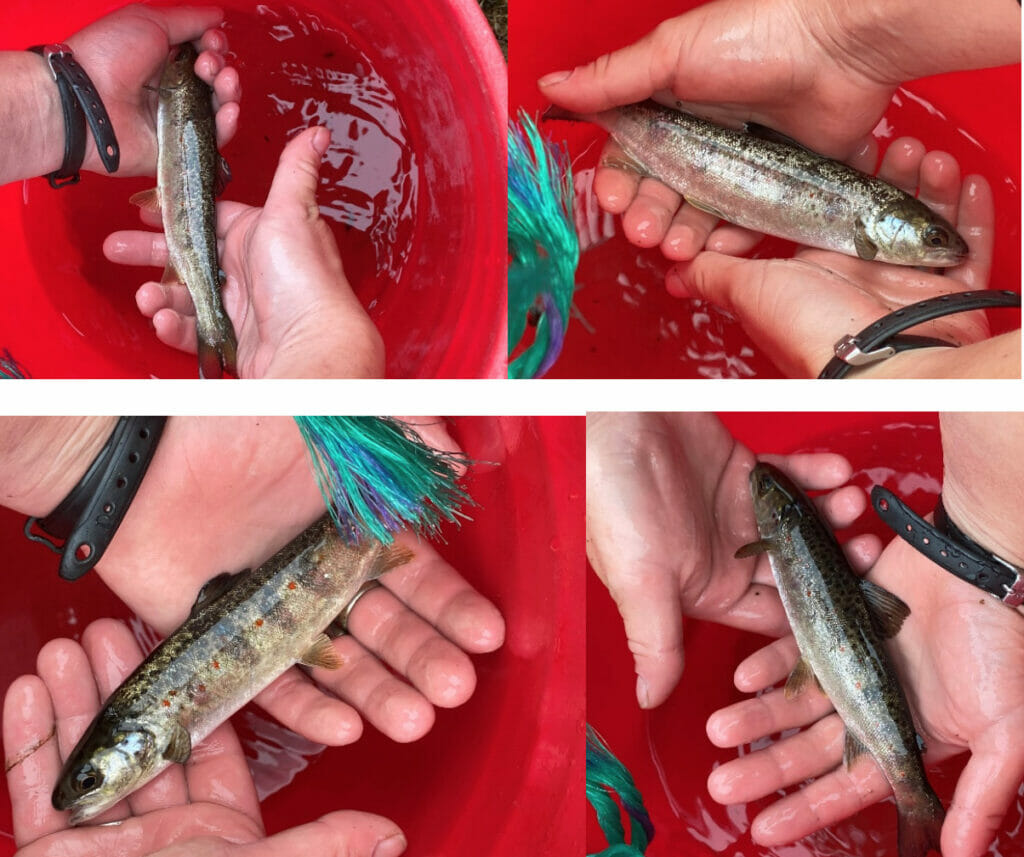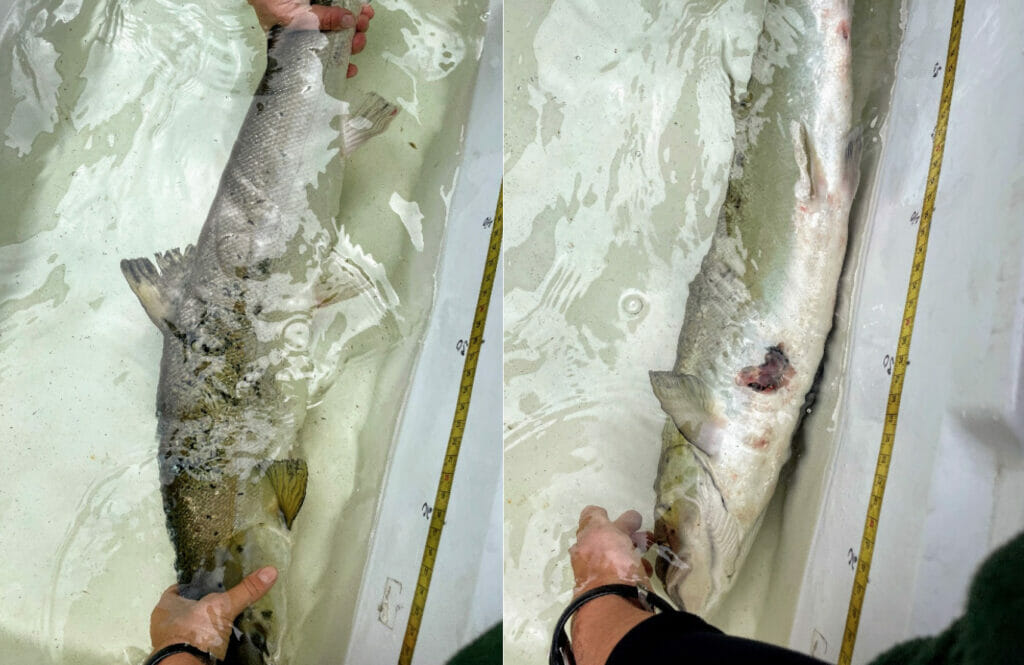Trout Unlimited | Atlantic Salmon Federation
For Immediate Release
Please Contact: Jeff Reardon (TU) (207) 430-8441; John Burrows (ASF) (207) 415-6637
June 22, 2021 (Augusta, ME) — Two conservation groups working to restore and conserve endangered Atlantic salmon and other sea-run fish on the Kennebec River expressed anger today that routine operations at Lockwood Dam in Waterville trapped and injured some of the few Atlantic salmon able to migrate through the watershed.
Trout Unlimited (TU) and the Atlantic Salmon Federation (ASF) protested that on June 15 the annual replacement of flashboards by Brookfield Renewable Partners stranded at least three adult salmon, 23 salmon smolts, and other fish below the Lockwood Dam. The fish stranding occurred when Brookfield installed flashboards on the dam, shutting off the flow to hundreds of feet of ledge and pools below. Two adult Atlantic salmon, which are a federally endangered species, had visible injuries. (Click the link below for detailed information about the salmon rescue operation.)

“Brookfield has been operating this dam without take coverage under the Endangered Species Act for more than 16 months,” said Jeff Reardon, TU’s Maine director. “Under the ESA, ‘Take’ includes harassing, harming, pursuing, or wounding salmon. If this is not a take under the ESA, it’s hard to imagine what would be. And this happens every year.”
Flashboards are installed each spring at the Lockwood Dam to raise the elevation of the impoundment and divert flow to the turbines. When they are installed, flow into the dam’s quarter-mile-long original channel are cut off, stranding endangered salmon and other fish attracted to flow over the spillway. Each spring, the Maine Department of Marine Resources (DMR) rescues salmon and other fish stranded by the diversion.
“Rescuing salmon from normal operations at this dam should not require that more than a dozen volunteers show up on a Tuesday morning,” said Phillip Allen, a TU volunteer from Vassalboro who recently graduated from Erskine Academy.
According to a June 17 “Field Summary of Atlantic Salmon Stranding Rescue at Lockwood Dam” issued by DMR, six staff from DMR, two staff from the Maine Department of Inland Fisheries and Wildlife, four staff from Brookfield, and about ten volunteers from Trout Unlimited and other conservation groups participated.

One injured Atlantic salmon — an adult male that had spent two years at sea before returning to Maine — was captured and transported in a truck to the Sandy River, 50 miles away. At least two other adult salmon—one visibly scarred—were also trapped in an isolated pool but could not be captured. Twenty-three Atlantic salmon juvenile smolts stranded on their way to sea after two years in freshwater were also netted and released downstream.
DMR’s report described the single salmon that was captured as a 73 cm (28”) male. Scale analysis indicated it was “a naturally reared 2 freshwater, 2 sea winter Atlantic salmon.” The report also described extensive injuries, including “scraped up body dorsally, scraped up sides (both left and right), an abrasion ventrally, a bruise on its left side, a lamprey wound scar on its right side, a split dorsal fin, a split caudal fin and a bruised snout.”
The groups also included a document with photos detailing the day’s efforts. TU volunteer Steve Brooke, who assisted with the rescue, noted that the single captured salmon was subjected to 11 minutes of active handling from the time it was netted to the time it was placed in a tank truck for transport upstream. A series of time-stamped photos taken by TU volunteers showed the fish was netted at 9:20 am; placed in a tub of water for canoe transport at 9:22; reached shore at 9:27; and was then passed hand to hand up the bank in a rubber bag and deposited in the truck at 9:31.
“Without the rescue effort, that fish likely wouldn’t have survived,” said Brooke. “But 11 minutes out of water is a long time, and that fish was handled multiple times. It was the lesser of two evils, but still a stressful event for the salmon.”
“What transpired at Lockwood last week may be routine for Brookfield, but it is unacceptable and illegal,” said John Burrows, Director of U.S. Programs for ASF. “Brookfield does not have the legal authority to harm, injure, or kill Atlantic salmon at Lockwood or any other dam that they own on the Kennebec River. Yet they continue to do so. This is precisely why last month our organizations announced our intent to sue Brookfield for its undeniable violations of the ESA.”

